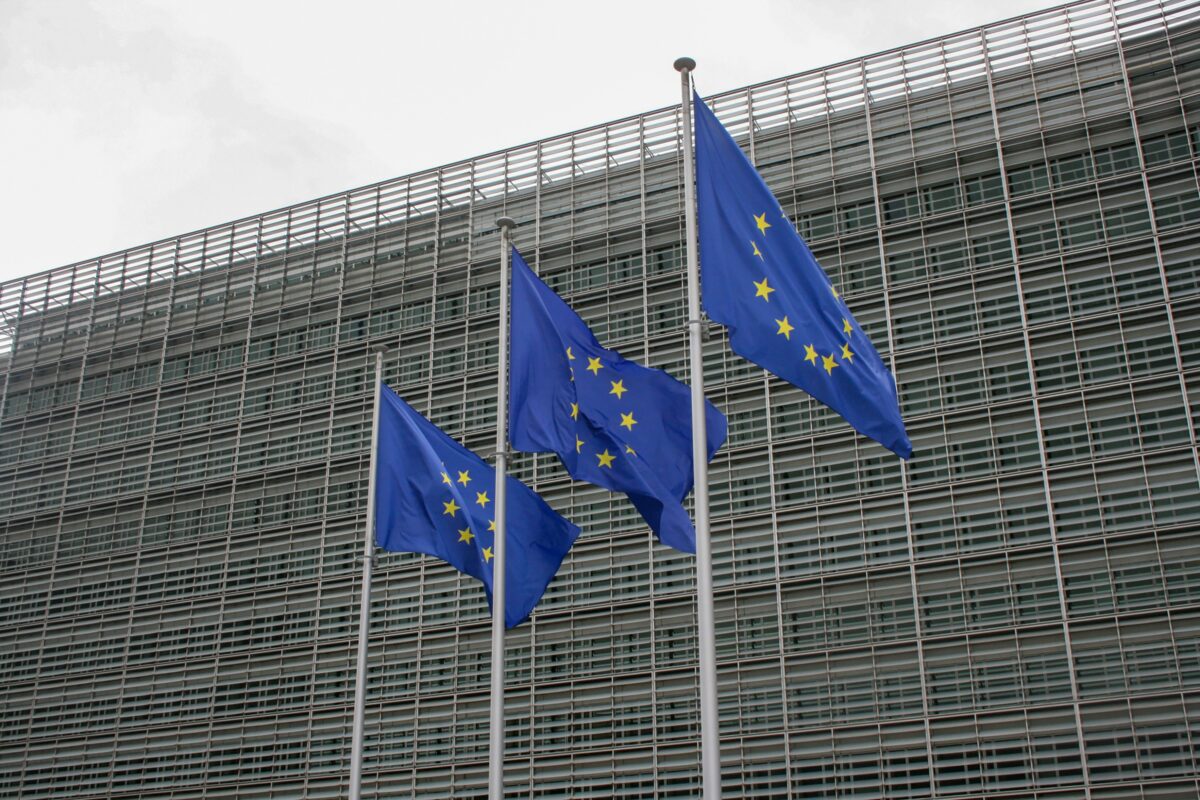From Keynes' 'bancor' to carbon coins: reviving monetary innovation for climate and stability.
What do the wildfires in Texas and Canada, floods in Kenya and Brazil, debt crises in emerging economies and growing global unease with the dominant position of the US dollar have in common? It might just be their solution through monetary policy innovation. More specifically, a new reserve currency, backed by the global commons, could provide a way out of the present polycrisis of climate change-, biodiversity loss, and shifting geopolitical and financial tectonic plates.
The climate battle is won or lost in the South
The twin ecological crises of climate change and biodiversity loss are global in their nature. According to the World Wildlife Fund report, the planet is facing a 69% average decline in wildlife populations since 1970. Similarly, and in spite of the increased adoption of renewable energy sources year after year, the global CO2 emissions keep growing.
It is the developed countries that bear most of the responsibility. The US, EU and UK account for almost half of all historical emissions while accounting for only 10% of the present global population. However, it is the countries in the global South that will be impacted disproportionately by these global trends. According to an Oxfam report, the 55 most climate-vulnerable countries have already amassed more than 500 billion USD in climate-related damages in the last twenty years. This combination of low historical GHG contribution, but high climate risk and the resulting higher interest rates, are a triple whammy for certain developing countries.
Despite this historical responsibility, the rich countries have proven reluctant to foot the bill. One estimate puts the climate mitigation funding gap in the global South at more than 2.4 trillion USD, with adaptation and loss and damage needs amounting to another 300 billion USD and 580 billion USD, respectively, yearly until 2030. Not even a relatively modest target of 100 billion USD yearly, promised to developing countries already in 2009, has been achieved. Moreover, the current public-private financing initiatives are lagging and the multilateral development banks are struggling to ramp up climate lending to the degree necessary to fill the gap.
On top of rising prices for energy and commodities, mobilisation of finance for climate mitigation and adaptation projects in the global South is made more difficult by the increase in interest rates set by the dominant currency issuers. Higher interest rates impact greener energy sources more than fossil fuel-based ones. This way developing countries are perversely incentivised to develop and industrialise through dirty energy sources. As the rest of the world is on a trajectory to decrease their emissions, emerging economies will not only be the biggest victims of climate change, they may very well also end up to be responsible for the bulk of emissions in the future – thus eliminating the chances for the world as a whole to limit climate change.
The West without the rest
Another fracture line between rich and developing countries is the place of their respective currencies in the global currency hierarchy. Rich countries, with the US on top of the pyramid, are monetary policy-makers: primarily responding to domestic macroeconomic shifts, but with stark cross-border knock-on effects. Other countries are the policy-takers in this order.
Only the most recent upshot of this institutional design is the impact of increased interest rates by Western central banks on the increasing debt load of the Global South countries. As already mentioned, the tightened monetary policy makes it more expensive to finance renewable energy projects in those countries. On top of this, richer countries have a relative advantage as they can simply outbid developing countries in food and energy costs during supply shocks impacting these goods, pushing prices even higher.
In addition to monetary policy, developed countries hold an outsized power over the ‘plumbing’ of the financial system. SWIFT, the institution that controls the messaging system that regulates bank transfers around the globe, is based in Belgium and under G10 countries’ central banks’ supervision. This centralised role gives SWIFT immense influence, including the power to enforce sanctions on certain countries and banks, as seen most recently in the case of banning Russian banks as a result of Russian invasion in Ukraine.
It is not surprising that pushback against this dominant role of the developed countries is emerging. Brazil’s President Luiz Inácio Lula da Silva is one of the most skeptical voices among the emerging countries that question support for Western sanctions towards Russia and their role in the Ukrainian war. He is far from alone in this skepticism, as other heads of state in the Global South are struggling to align with the West, partly as a result of the colonial history of some of these countries.
Consequently, at the BRICS summit of large emerging economies in August this year, Lula called for an alternative currency to be used by the countries in this informal block, appealing to more independence from the US dollar and Fed’s monetary policy. He is not the first non-Western official to voice this concern. Former head of the People’s Bank of China, Zhou Xiaochuan, has also called for less reliance on the dollar in the multi-polar world, although he offered an increased role of IMF’s Special Drawing Rights as a medium-term solution.
Interestingly, there are also Western voices that have argued for similar moves towards a more multipolar global financial architecture. Mark Carney, then head of the Bank of England, has called for a Synthetic Hegemonic Currency, a new global currency backed by a basket of national central bank digital currencies. The added value of introducing it would, according to Carney, reduce the spillover effects of the dominant currency’s monetary policy – a crucial issue for developing countries — as well as help dampen volatile capital flows to and from developing economies. In addition, the Stiglitz Commission came to the conclusion in 2009 that establishing a supra-central bank who could issue new global currency might be necessary to address the same concerns referenced by Carney.
Finance for peace
These ideas are not new. At the 1944 Bretton Woods conference, John Maynard Keynes was leading the Great Britain delegation. He envisioned a geopolitically multipolar world after the war that would do away with domination of a single nation. In order to maintain the equilibrium of power he proposed the establishment of a global trade currency, the so-called ‘bancor’. The administration of the proposed system would be assigned to a new institution – the International Clearing Union (ICU). This independence would relieve any single state or its central bank of providing the world with a reserve asset and considering global knock-on effects of its monetary policy. Moreover, the ICU would penalise excessive trade deficits and surpluses to safeguard stability and prevent trade wars. This arrangement could, Keynes hoped, prevent large inequalities between nations and thus, hopefully, preclude from future large-scale conflicts. In effect, Keynes’s proposal was ultimately a peace project.
In spite of Keynes’s stature and the international relevance of Great Britain, and with the geopolitical rise of the US, the American delegation’s dollar-based proposal ended up paving the way for the future. This dollar dominance, while surviving various institutional transformations, is still with us today. But its decline, coupled with geopolitical tensions and climate deterioration, prompt us to rethink an approach calling for a more multilateral order oriented towards cooperation and peace.
‘Greening’ Keynes
As fiscal transfers and private investment have to date not delivered on climate funding promises, it is time to try a fresh approach: leveraging monetary solutions. The main idea in this space is introducing a new global currency backed by natural capital.
Commodity-backed currencies are nothing new, as all of them were, through the US dollar, backed by gold until the early 1970s. The key difference with the nature/climate-based currencies is that the commodity here is not gold, but rather a natural stock of some sort. In that sense, currency tokens might be issued by a monetary authority for a biodiversity goal achieved (e.g., afforestation per acre) or one ton of carbon dioxide credibly mitigated for a set number of years. Other proposals suggest backing currencies by a fixed amount of (fossil-free) energy produced.
This might sound abstract, but it is essentially an idea behind the asset that is already being widely traded today: carbon offsets. Carbon offsets are a kind of a currency that gets minted for a unit of GHG abatement. The key difference is that carbon offsets do not have a centralised, public and politically legitimatised administrator with clear criteria of issuance. This is something that would be key for a global nature-backed currency.
In addition, the blockchain technology might reinforce trust in the certification process of carbon offsets. While controversial in its role as underlying various speculative and volatile cryptocurrencies, blockchain could enhance verifiability and transparency in carbon offset markets. This could ameliorate the governance issues plaguing the voluntary offset market presently.
There are more advanced proposals that promote the idea of carbon currencies. For instance, Frank van Gansbeke, lecturer at Middlebury College, designed an IMF Climate Coin. This would be a stablecoin issued by an IMF subsidiary, funded by IMF members’ central banks through quantitative easing. The Climate Coin would be backed by SDRs and natural resources, and would have a value relative to CO2-equivalent abated.
The idea that gained most prominence in the public discourse is fictionalised in Kim Stanley Robinson’s book “Ministry of the Future” and borrowed from the Australian author Delton Chen. In essence, it envisions an agreement between central banks to prop up the price of a new global asset through their asset purchasing programs. This new asset would be issued by an independent international body against a certified unit of CO2 removal or emission avoided for a certain number of decades. This guaranteed, and increasing, asset price supported by central banks would make it attractive for investors to make it a part of their portfolios. Consequently, it would incentivise and reward carbon mitigation and sequestration.
Most recently, OpenEarth Foundation published a whitepaper on nature-based central bank digital currencies, which would be issued by Treasuries and circulated into the broader financial system via central banks. These national currencies would be used to purchase certified carbon offsets available to private companies to achieve their ESG and SDG targets.
Closest to Keynes’ proposal, albeit without the explicit nature backing, was Yanis Varoufakis’ call for ‘Kosmos’. An international trade currency with a built-in levy system, penalising large trade surpluses and deficits, as well at the capital surges in and out of countries. The levy proceeds would be used for investments, such as research and development for green energy sources and the green transition.
Killing two birds with one stone
The global currency hierarchy seems to be shifting. The dollar system is marred by multiple crises – internal and external. Most recently, a cascade of banking collapses initiated by a regional bank has caused panic in the system and forced the hand of regulators to massively expand the deposit guarantee system. On the international front, the dollar’s role of a reserve asset is being challenged and the BRICS are working on an alternative. This bifurcation risks becoming entrenched in the global monetary architecture, thus potentially further fuelling the geopolitical divide.
It is thus high time to rediscover the spirit of Bretton Woods, where the nations of the world would agree on a monetary architecture that not only works for the economy and planet, but that also promotes peace. For this to work we need to go back to Keynes’ original proposals at the Bretton Woods conference, where several countries are not dependent on just one, but where the multipolar reality of the international politics is mirrored in the monetary architecture.
At this juncture in time, with the global challenge of climate change and biodiversity loss threatening our very existence, it is reasonable to base this new global currency on efforts to prevent the collapse of our climate and nature. A global carbon- or nature-coin has the potential to achieve all this.
To be sure, there are many questions about mandates, legitimacy and institutional design open around these proposals. However, in light of the failure to finance climate change mitigation, as well as a lack of credible alternatives to US dollar as a reserve currency, carbon coins might be like proverbial democracy: the worst solution, except all others we’ve tried.
For more information, go to: https://www.beyondbrettonwoods.org/members
By Aleksandar Simic, Rens van Tilburg and Frank van Gansbeke.




